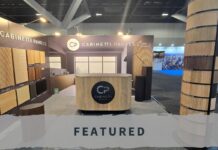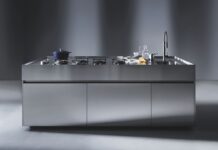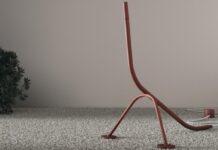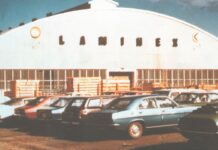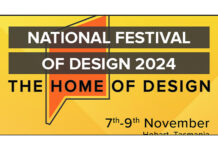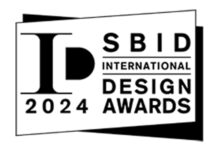A top theme as last year’s ISH was eco-design in ventilation technology, also known as Aircontec. Aircontec is the name given to air-conditioning, refrigeration and ventilation technology and its focus at the show allowed the industry to present innovative component and system solutions for renovation work and new buildings in the residential and non-residential sector.
 Modern ventilation technology not only provides a comfortable indoor environment and hygienic air-exchange, but is also very energy saving through heat recovery, demand-based control and efficient fans. By means of the Ecodesign Directive, the European Union (EU) intends to further encourage the greater use of particularly energy-efficient equipment.
Modern ventilation technology not only provides a comfortable indoor environment and hygienic air-exchange, but is also very energy saving through heat recovery, demand-based control and efficient fans. By means of the Ecodesign Directive, the European Union (EU) intends to further encourage the greater use of particularly energy-efficient equipment.
 The Ecodesign Directive determines energy efficiency requirements for products related to energy use. What has for many years been commonplace for consumers of white goods, now also affects areas of ventilation technology. In the ventilation technology sector these statutory provisions now affect the following products: air-conditioning equipment, fans, central ventilation systems and domestic ventilation units.
The Ecodesign Directive determines energy efficiency requirements for products related to energy use. What has for many years been commonplace for consumers of white goods, now also affects areas of ventilation technology. In the ventilation technology sector these statutory provisions now affect the following products: air-conditioning equipment, fans, central ventilation systems and domestic ventilation units.

Since 2013 air-conditioning equipment with a cooling capacity of up to 12kW must have an energy class rating of A+++ to D, carry a corresponding energy label and at least meet the requirements of energy efficiency class A in terms of their cooling function. The minimum requirements also apply since 2013 to fans over 125 watts, although these were further tightened in 2015.
 When the relevant EU regulations came into force on 1 January 2016 it was the first time that central ventilation systems and domestic ventilation units had been required to also meet respective eco-design requirements. Since then central ventilation systems have been required to meet minimum requirements with respect to fan power consumption and heat recovery efficiency. The limit values for fan power consumption apply equally to central ventilation systems with unidirectional and bidirectional flow. For bidirectional units which expel used air in two separate air flows and replace it with fresh air, heat recovery is also required to achieve an efficiency of at least 67 percent – irrespective of climatic conditions. Technical implementation of this requirement has led, in part, to units with the same air output needing to be 30 percent larger in size.
When the relevant EU regulations came into force on 1 January 2016 it was the first time that central ventilation systems and domestic ventilation units had been required to also meet respective eco-design requirements. Since then central ventilation systems have been required to meet minimum requirements with respect to fan power consumption and heat recovery efficiency. The limit values for fan power consumption apply equally to central ventilation systems with unidirectional and bidirectional flow. For bidirectional units which expel used air in two separate air flows and replace it with fresh air, heat recovery is also required to achieve an efficiency of at least 67 percent – irrespective of climatic conditions. Technical implementation of this requirement has led, in part, to units with the same air output needing to be 30 percent larger in size.
From 1 January 2016 domestic ventilation units must save at least as much primary energy as they consume. These minimum energy requirements were further increased from 1 January 2018, making it now necessary to approximately halve the ventilation heat requirement of a residential building. Common calculated parameters for domestic ventilation units must be applied across Europe and likewise through national procedures to determine energy consumption.
 The respective domestic ventilation units carry an EU energy label classification in accordance with a calculated parameter for the specific energy consumption, or SEC. This value reflects the potential saving of primary energy (power consumption for fans minus heat energy saving) of this ventilation unit in relation to window ventilation of equal air quality. The higher this negative value, the more primary energy the unit saves. In addition, the energy label provides information about the nominal air flow rate and the sound power level of the unit.
The respective domestic ventilation units carry an EU energy label classification in accordance with a calculated parameter for the specific energy consumption, or SEC. This value reflects the potential saving of primary energy (power consumption for fans minus heat energy saving) of this ventilation unit in relation to window ventilation of equal air quality. The higher this negative value, the more primary energy the unit saves. In addition, the energy label provides information about the nominal air flow rate and the sound power level of the unit.
While featuring exhibitor new product innovations, ISH 2017 offered a wide-ranging complementary program that looked at current developments in the sector. Of special interest for trade visitors from the sector of air-conditioning, refrigeration and ventilation technology are the Air-conditioning Forum, the Real Estate Forum of the German Association of the Building Services and Technical Installation Industry and the IKK Building Forum.
 Article and images courtesy ISH.
Article and images courtesy ISH.
For more information visit ish.messefrankfurt.com


